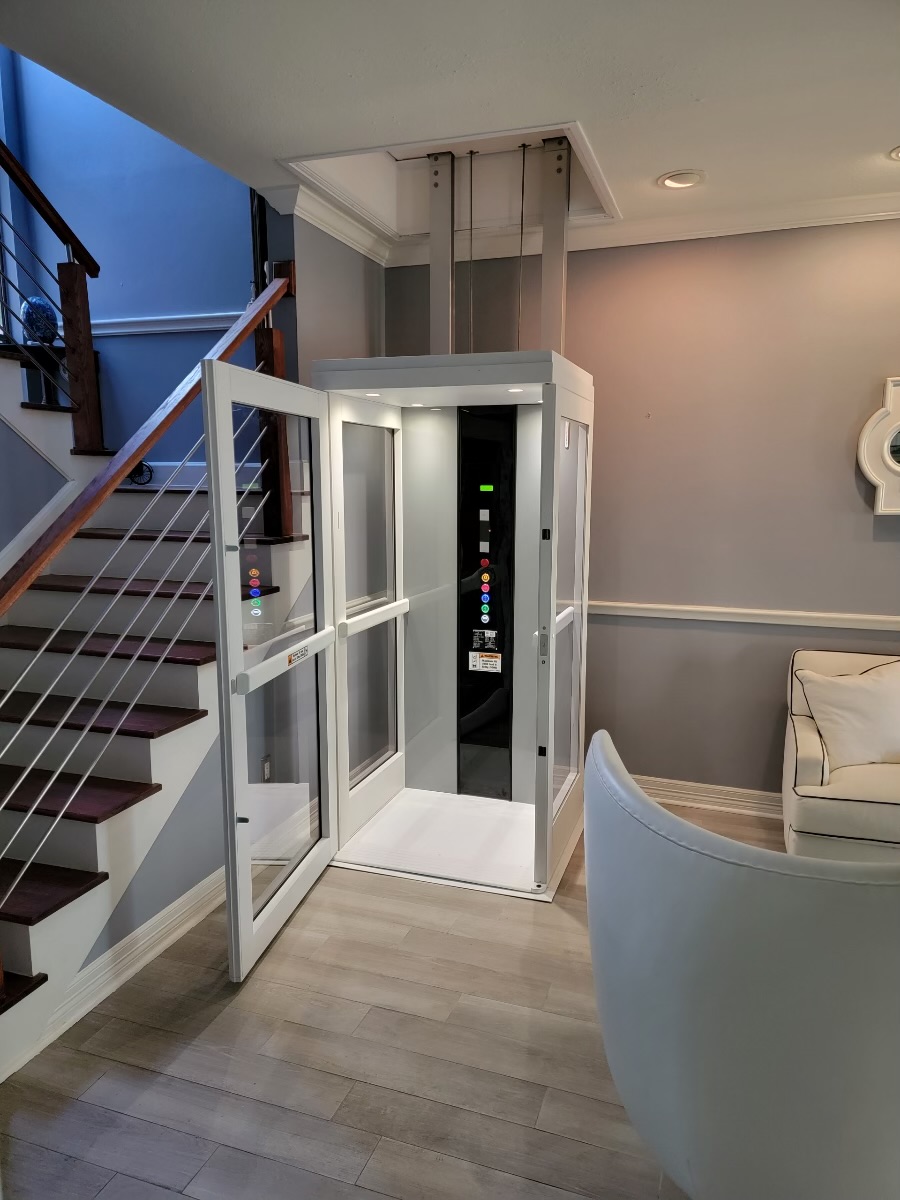For those living with mobility struggles or those planning to age in place, living in a home with multiple floors can be a challenge. But there is no reason for the upper floors of your home to be inaccessible. LiveWell has multiple options available to keep you mobile throughout the entire home.

Elevators and stairlifts are the two methods used to bypass challenging stairs. Choosing between an elevator and a stairlift for your home depends on various factors including your budget, space availability, mobility needs, and personal preferences.
Here are a few things to consider when decided if an elevator or a stairlift is right for your home:
Mobility Needs: Assess the mobility needs of the individuals who will be using the lift. If they have difficulty climbing stairs and need assistance both indoors and outdoors, a stairlift might be more appropriate. If they have trouble with both stairs and standing for extended periods, an elevator might be a better choice.
Space Availability: Evaluate the available space in your home. Stairlifts require a straight or curved staircase, while elevators need dedicated space for installation, such as a shaft or a room. If space is limited, a stairlift might be the more practical option.
Cost: Consider your budget. Stairlifts are generally more affordable than elevators, especially if you have a straight staircase. Elevators require more extensive construction and installation, which can increase the overall cost significantly. LiveWell does have through-the-floor elevators which are more affordable and require less construction time than a traditional home elevator.
Home Layout: Examine your home's layout and design. If you have multiple floors and ample space, an elevator may provide better accessibility and convenience. However, if your home has only a few steps or a narrow staircase, a stairlift may suffice.
Aesthetics: Think about the aesthetic impact of each option. Stairlifts are typically installed on the staircase itself and may not be visually appealing to some people. Elevators, on the other hand, can be integrated seamlessly into your home's design and may enhance its overall aesthetic. They also add a luxurious feature that can become a wow factor in the home.
Maintenance: Consider the maintenance requirements of each option. Stairlifts generally require less maintenance compared to elevators, which may need regular servicing to ensure smooth operation and safety compliance.
Future Needs: Anticipate any future changes in mobility needs. If there's a possibility that mobility issues may worsen over time, investing in an elevator might be a more future-proof solution that can accommodate changing needs. Things such as dependability on assistive devices such as walkers, canes, or even wheelchairs need to be considered as well. Although these items may not be used NOW, it's always a possibility in the future.
Consultation: Finally, the ultimate way to get all of the information you need and to have all of your questions answered, is to consult with a professional. At LiveWell, our Accessibility Consultants can provide a free in-home consultation and provide all of the details that you need to make the best possible decision for your situation and your home.
Ultimately, the decision between an elevator and a stairlift depends on your specific circumstances, preferences, and priorities. By carefully considering these factors and consulting with the experts at LiveWell Mobility, you can choose the option that best meets your needs and enhances your quality of life at home.
To read more blog posts or to see other recent projects, click here.

